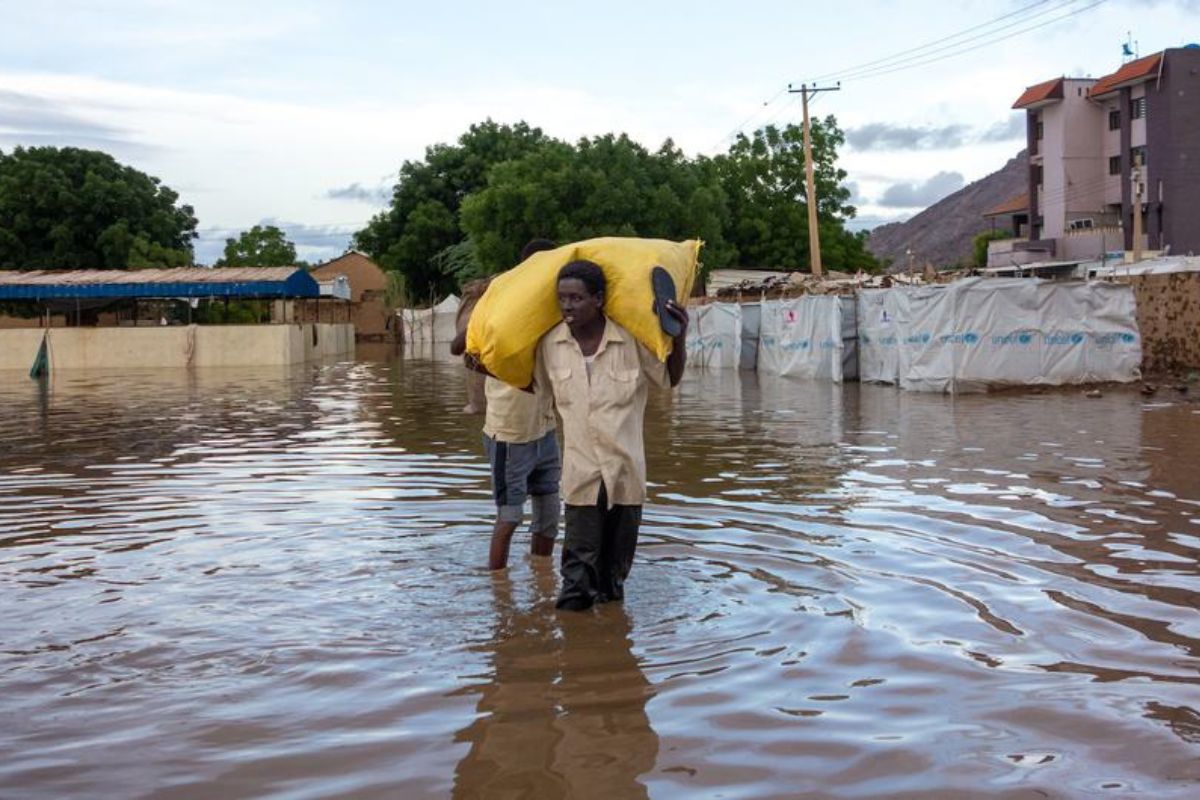Climate change is not just an environmental problem, but a real humanitarian crisis. The United Nations High Commissioner for Refugees explains this in its latest report

@Unicef
The UNHCR estimates that climate change may force 216 million people to leave their homes by 2050. The enormous displacement due to increased extreme weather events and lack of global action shows a deep linkage between climate, conflict, and forced displacement, according to the UN refugee agency in its latest report, “No Way Out”, launched on November 12 at COP29 in Baku.
Currently, over 120 million people have already been displaced, and at least 75% of them live in countries that are highly vulnerable to climate change. By 2040, the report states, as many as 65 countries may well experience severe climate impacts, further threatening the stability of fragile communities.
Climate-conflict nexus
The climate crisis is displacing people in regions already hosting large populations uprooted by conflict and insecurity, worsening their plight and leaving them with nowhere safe to go,” said Filippo Grandi, United Nations High Commissioner for Refugees.
The conflicts and armed violence that displace many of them are particularly evident in Sudan, where armed violence has internally displaced more than 4 million people and forced 700,000 refugees to cross into Chad, a country already suffering from desertification and water scarcity. Refugees also suffer from climate-related hazards in host countries. Many refugee camps, usually located in arid regions, could experience as many as 180 days of dangerous heat per year by 2050—twice as many as today—warns the report.
In 2022 alone, climate-related natural disasters affected over 20 million people—a number expected to rise without immediate action. Flooding, for instance, has increasingly devastated refugee settlements, as seen with Cyclone Mocha, which severely impacted camps in Bangladesh, exacerbating the struggles of those fleeing Myanmar.
Voices from the climate frontlines
“In our region, where so many have been displaced for so many years, we see the effects of climate change with our own eyes,” said Grace Dorong, a climate activist and former refugee from South Sudan. Tales like that of Dorong underpin how communities in conflict are increasingly hit by back-to-back droughts, crop failures, and depleting water sources.
In 2022 alone, more than 32 million people have been displaced due to conflict and climate disasters, with African nations being the worst hit. The UNHCR report stresses how the voices of refugees and those in host communities always remain at the fringes of global discussions.
“I hope the stories in this report help decision-makers understand that unless addressed, forced displacement and the multiplier effect of climate change will only worsen. But if they listen to us, we can also be part of the solution,” Dorong added.
Climate funding challenge
Among the most striking findings of the report, there is certainly unequal climate financing. Fragile countries receive only $2 per capita for climate adaptation, while for more developed nations, this figure rises to $161 per capita. When funds finally do come in, over 90% is spent in the capital cities, completely bypassing peripheral areas where climate impacts are greatest.
Between 2010 and 2022, only 20% of global climate financing reached the least developed countries, perpetuating a growing resilience gap.
